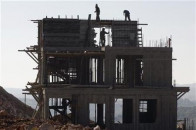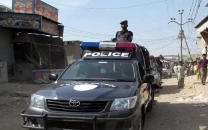‘66% of healthcare professionals experience or witness violence’
Research further reveals that 30% were attacked physically or verbally

Research further reveals that 30% were attacked physically or verbally. PHOTO: FILE
Almost 82 per cent incidents were reported from inside the medical institutions. The emergency departments and the wards were the most common sites of violence. Around 30 per cent physicians, security staff and ambulance staff have faced violence, which is the highest compared to the other staff of the hospitals, added the report.
The healthcare providers in public hospitals experienced 30.5 per cent verbal violence more than physical violence, which is 14.6 per cent. “The people behind the violence aren’t patients’ family members or relatives,” said Dr Lubna Ansari Baig, the dean of APPNA. “They are ‘unknown’ persons.”
The report, prepared by the APPNA Institute of Public Health of Jinnah Sindh Medical University, Karachi, in collaboration with the Jinnah Postgraduate Medical Centre (JPMC), Ziauddin Medical University and International Committee of the Red Cross, disclosed the figures of violence in healthcare facilities of the city over the last one year.
Sharing details of the study, she said that the ambulance service providers face violence more than doctors and other staff.
“People encourage violence,” said Dr Seemin Jamali, the head of the JPMC’s emergency ward. “The level of tolerance among people is very low, so our staff has to face consequences.”
Dr Jamali said that public institutions have a very low quantity of ambulances, adding that all the hospitals rely on private and philanthropist organisations for this service. “We kept bodies for hours due to lack of ambulance services when the heatwave hit the city,” she explained.
Published in The Express Tribune, November 14th, 2015.



















COMMENTS
Comments are moderated and generally will be posted if they are on-topic and not abusive.
For more information, please see our Comments FAQ